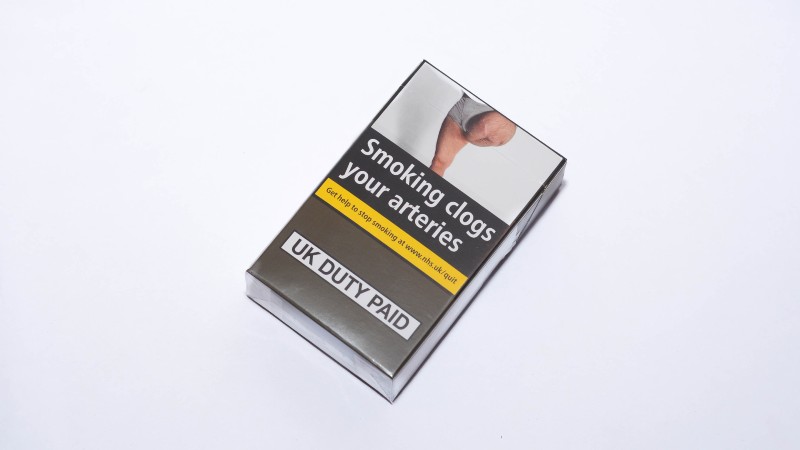Raising the price of cigarettes reduces consumption, especially by the young and the poor, thereby improving public health and reducing socio-economic inequalities in smoking. That is one reason why governments around the world have raised taxes on tobacco products.
Led by Professor Anna Gilmore Director of Bath’s Tobacco Control Research Group, researchers from Health and Management, including Dr Rosemary Hiscock and Dr Rob Branston, have undertaken extensive research into the tobacco industry pricing of cigarettes.
Understanding tobacco industry pricing
Back in 2009, the Bath team identified a knowledge gap on tobacco industry pricing and they undertook, funded by an EU-wide project, some of the first contemporary research on this topic. This resulted in three key findings:
UK national survey data showed that the cheapest tobacco products were, most commonly, smoked by the young and the poor. Further analysis using price data revealed the tobacco industry was absorbing tax increases on these cheap products – prices did not rise as expected from rising taxes, to the extent that (after taking inflation into account) the cheap products’ prices were stable. This kept tobacco products affordable for (a) low income smokers, reducing the incentive to quit and (b) young people, minimising financial barriers to uptake.
Prices of expensive brands rose more than needed to meet tax rises on expensive products.
These price rises of expensive brands, coupled with high sales of cheap brands, allowed companies to increase their profits overall despite the increase in taxes. The research also showed that observed price increases overall go beyond price increases required by government taxes. The remaining increase was industry profit-taking.
This provided clear and rigorous evidence that, as a result of industry pricing practices, existing taxes on cigarettes were failing to achieve their intended public health effects.
At the time, the tobacco industry made claims that price increases resulting from tobacco taxes, were encouraging a trade in illicit tobacco. Research undertaken by Professor Gilmore and her colleagues demonstrated that the industry had markedly exaggerated the scale of illicit tobacco in the UK, while downplaying its own involvement in supplying the illicit market. The industry’s increase in prices above that expected from tax rises implies that they were not concerned about high prices encouraging illicit.
On top of the group’s other research showing the immense profitability of the tobacco industry, this indicated the scope for further tax increases in the UK. Collectively this research resulted in their recommending the introduction of a minimum excise tax (MET) on cigarettes.
The UK government introduces the MET
It was on the basis of the research carried out by Professor Gilmore and colleagues that the UK government introduced the MET in 2017. In addition to this significant achievement, the initial research subsequently led to the team winning two follow on research grants from National Institute for Health Research (NIHR).
These allowed updates of earlier findings using new data sources and to extend coverage to include roll-your-own tobacco and alcohol. A further grant from Cancer Research UK and the British Heart Foundation looked into the impact on prices and sales of tobacco as a result of the introduction of the MET and the laws on plain packaging.
Changing government thinking, policy and legislation
Professor Gilmore and colleagues took their research findings to the UK Government, which used them as the basis for a public consultation, in which their work was cited and reproduced. This led directly to a change of policy in 2017 - the introduction of a MET, which by establishing a higher minimum level of taxation, encourages a minimum price for each cigarette. If tobacco companies sell below this price floor, they still pay the rate of tax as determined by the MET and hence lose revenue. The MET is designed to stop companies selling cigarettes so cheaply whilst providing revenue to government.
The research team argued that this was preferable to a minimum price where the extra price growth to meet a stipulated price floor would fund industry profits (rather than provide revenue to the government which is then available for improving public health).
In 2011, Professor Gilmore presented the preliminary findings on tobacco industry pricing to HMRC, HM Treasury and Department for Health Civil Servants, to raise awareness of the issues uncovered. Until this point, the HM Treasury, had only used the prices of premium brand cigarettes to measure the impact of tax increases. This meant the issue of widening prices and the stagnation of pricing in cheaper brands went unnoticed. This presentation of findings, along with subsequent meetings led to the establishment of a case for MET.
From 2012 onwards, Professor Gilmore and colleagues summarised the research findings and the relevant policy recommendations in annual Budget submissions sent to the Treasury. These submissions were led by Action on Smoking and Health, and covered the problem of industry pricing, the need for a MET and the scope for further tax increases given industry profitability and previous misleading data on levels of tobacco smuggling. Each year, the submissions referenced research undertaken by Professor Gilmore and colleagues, and were often publicised in the press (e.g. in The Guardian in 2015).
Professor Gilmore or Dr Branston met with a Budget Minister annually alongside Action on Smoking and Health to present updated research findings and supporting policy recommendations.
'Gilmore et al’s research was essential in providing the evidence base necessary to convince HM Treasury of the need for a Minimum Excise Tax, and it is not an exaggeration to say that without their work we would not have a MET. In turn the MET has done exactly what was predicted – increased the price of the very cheapest brands. This will be vital in driving down inequalities. It has also played a key role in driving down tobacco use more widely. The health gains of that, given tobacco kills up to two in three of its long-term users cannot be exaggerated. ' - Deborah Arnott, CEO, ASH
Educating partners on the research
Alongside HMRC, UK Border Force, and others, Professor Gilmore was a member of the Illicit Tobacco Partnership, in which she promoted her research findings. Her involvement allowed her to inform other partners about the research and its policy implications.
Though it was announced through the April 2014 Budget that a consultation process regarding MET would begin, it was not immediately introduced. Therefore, the University of Bath’s team continued their work to promote the need for this change. By 2016, the budget announced that a MET would be introduced from May 2017 – a great success for ASH and the team.
Embedding Change
The MET is an addition to existing tobacco taxes: ad valorem tax on Factory Made (FM) brands (a tax levied as a percentage of the sales value) and specific tax (tax on volume sold). The MET is an alternative method of calculating the tobacco duty payable on the cheapest FM brands where ad valorem duty might otherwise mean that total duty was lower than a specified minimum. From 20th May 2017 the specific rate of duty on cigarettes was an amount equal to the higher of the following alternatives: either A. £207.99 per 1,000 cigarettes plus 16.5% of retail price, or B. £268.63 per 1,000 cigarettes. Thus the MET for a 20 pack of cigarettes was initially £5.37.
However, the process did not stop there. The MET has been consistently upgraded (November 2017, October 2018, March and November 2020). This prevents cheap cigarettes becoming more affordable over time as a result of inflation and changing consumer incomes.
From policy change to reducing smoking among the young and less well off
Changes in policy, that have been heavily influenced by the research undertaken by the team at Bath have the potential to reduce smoking rates considerably, particularly among the young and least well off. This in turn will lead to significant health benefits and a reduction in health inequalities, of which smoking is the leading cause. The first stage of evaluating this is to examine the impact on price. Research to date shows that the MET has increased the price of the cheapest cigarettes and contributed (alongside standardised packaging of tobacco products) to reductions in cigarette sales.
Stimulating similar policy shifts around the world
Professor Gilmore, Dr Branston and Dr Hiscock have presented research findings at numerous key conferences in the UK and globally for example in Amsterdam, Berlin, and Singapore. They also make their work publicly accessible on their knowledge exchange platform, TobaccoTactics.




